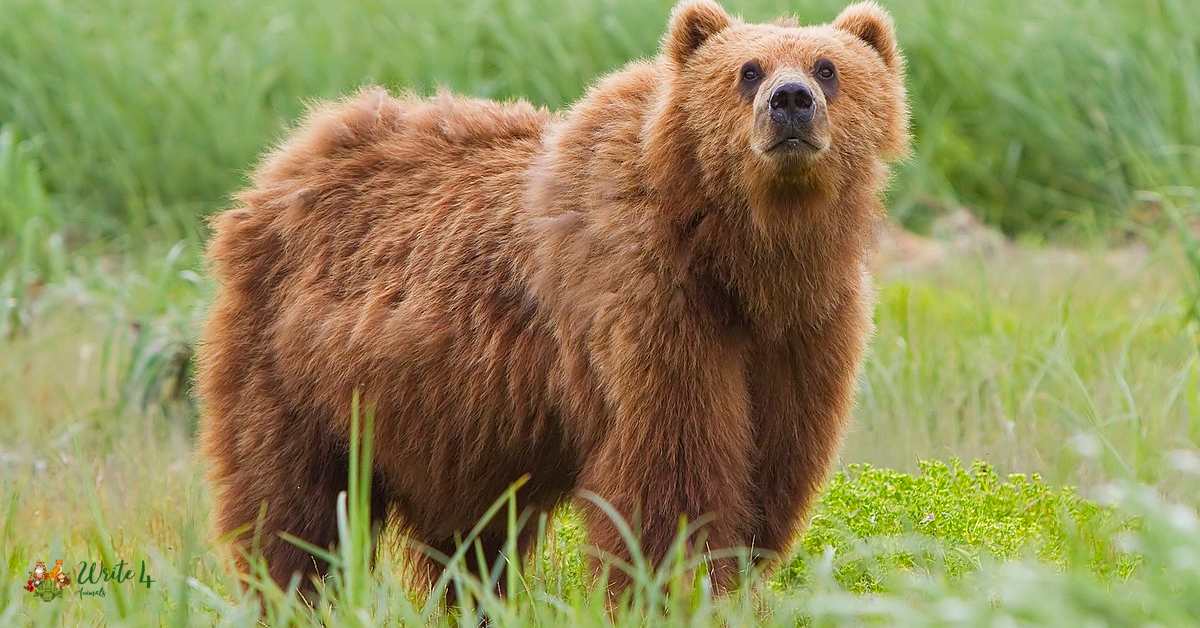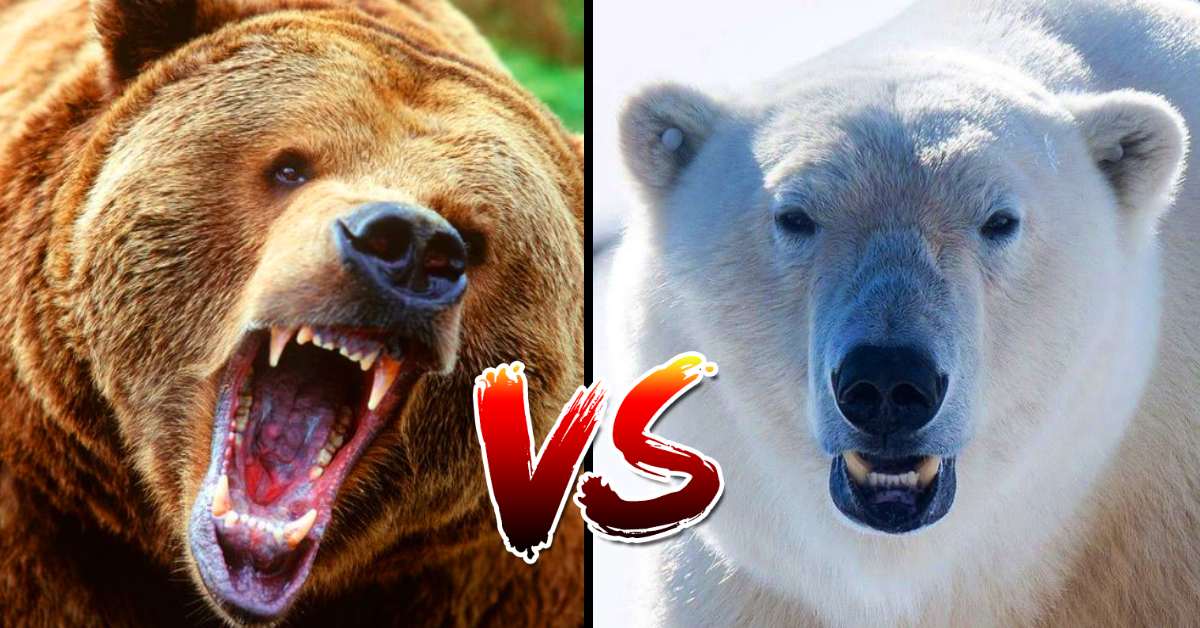Bears are among the most iconic and powerful creatures on Earth, capturing the imagination of people around the globe. Two particularly fascinating members of the bear family are the Polar Bear (Ursus maritimus) and the Kodiak Bear (Ursus arctos middendorffi). Both species are formidable in their own right, but they inhabit vastly different environments and have unique adaptations that make them distinct.
In this comprehensive Polar Bear vs Kodiak Bear comparison, we will delve into the characteristics, habitats, behaviors, and conservation status of these magnificent bears.
Polar Bear vs Kodiak Bear Comparison
Polar Bear vs Kodiak Bear: History and Origins
Bear Evolution: The history and origins of polar bears (Ursus maritimus) and Kodiak bears (Ursus arctos middendorffi) can be traced back to a common ancestor—the brown bear. Ursids, or bears, belong to the family Ursidae and have undergone various adaptations over time, leading to the emergence of distinct species.
Polar Bear Origins: Polar bears are believed to have evolved from brown bears, with genetic studies suggesting a divergence around 150,000 years ago. The unique characteristics of polar bears, such as their white fur, streamlined bodies, and specialized adaptations for an aquatic lifestyle, developed as a response to the harsh Arctic environment.
These bears are superbly adapted to survive and thrive in the extreme cold, relying on sea ice as their primary hunting ground.
Kodiak Bear Origins: Kodiak bears, on the other hand, are a subspecies of the brown bear specifically adapted to the Kodiak Archipelago in Alaska. The isolation of this island environment contributed to the distinct characteristics of Kodiak bears, including their impressive size.
While their lineage is closely tied to brown bears, the Kodiak subspecies exhibits unique traits shaped by the geography and ecology of their island habitat.
Physical Characteristics:Polar Bear vs Kodiak Bear
Polar Bear:Polar bears are the largest land carnivores and are well-adapted to their frigid Arctic habitat. Their most distinguishing feature is their stark white fur, which provides excellent insulation and acts as effective camouflage on the sea ice.

Beneath this dense fur, their skin is black, helping them absorb and retain heat from the sun. Their massive size, powerful limbs, and large paws equipped with sharp claws make them excellent swimmers.
Kodiak Bear: The Kodiak bear, a subspecies of the brown bear, is renowned for its immense size. While not as hefty as their polar counterparts, Kodiak bears are the largest brown bears in the world.
They have a distinctive hump on their shoulders, a feature shared with other brown bear subspecies. Their fur can range from dark brown to blond, and they are equipped with strong limbs and sharp claws, which aid in digging for food and climbing.
Habitat and Range:Polar Bear vs Kodiak Bear
Polar Bear: Polar bears are uniquely adapted to the extreme conditions of the Arctic Circle, relying on sea ice as their primary platform for hunting seals. They are most commonly found in the ice-covered waters surrounding the Arctic Ocean, using ice floes to traverse vast distances in search of prey. Climate change and the subsequent reduction of sea ice pose a significant threat to their survival.
Kodiak Bear: Kodiak bears inhabit the Kodiak Archipelago in southwestern Alaska, making their homes in a variety of ecosystems ranging from coastal meadows to dense forests.

Unlike polar bears, Kodiak bears are terrestrial and do not rely on sea ice for survival. Their habitat provides a mix of vegetation, salmon-rich rivers, and ample opportunities for foraging.
Diet and Feeding Behavior:Polar Bear vs Kodiak Bear
Polar Bear: The primary diet of polar bears consists of seals, particularly ringed and bearded seals. They are highly skilled hunters, relying on their keen sense of smell to detect seals’ breathing holes in the ice. Polar bears are known to patiently wait for hours near these openings, using their powerful limbs to snatch seals when they emerge.
Kodiak Bear: Kodiak bears are omnivores with a diverse diet that includes fish, berries, plants, and occasionally mammals. During the salmon runs, they are often seen fishing in rivers, displaying remarkable agility in capturing the swift-swimming prey. In times of scarcity, Kodiak bears may turn to vegetation, using their strong claws to dig for roots and tubers.
Behavior and Social Structure: Polar Bear vs Kodiak Bear
Polar Bear: Polar bears are generally solitary creatures, with adult males and females leading solitary lives outside of the breeding season. However, mothers and cubs form close-knit family units. During the mating season, males may engage in confrontations to establish dominance and secure mating rights.
Kodiak Bear: Kodiak bears are also largely solitary, though they may congregate in areas with abundant food, such as salmon-rich rivers. During the mating season, males may engage in competitive behaviors to establish dominance and gain access to females. Mothers with cubs, however, exhibit a strong maternal bond, with the family remaining together for an extended period.
Conservation Status:Polar Bear vs Kodiak Bear
Polar Bear: Polar bears face a significant threat due to climate change, which results in the reduction of their sea ice habitat. As the ice diminishes, polar bears are forced to travel greater distances in search of food, leading to increased energy expenditure and declining body condition. The International Union for Conservation of Nature (IUCN) lists polar bears as vulnerable, highlighting the urgency of addressing climate change to secure their future.
Kodiak Bear: The Kodiak bear population is relatively stable, and they are not currently listed as a threatened species. Conservation efforts in Alaska, including regulations on hunting and habitat protection, contribute to the well-being of these bears. However, ongoing monitoring and conservation initiatives are crucial to maintaining a healthy population and preserving their unique ecosystems.
Polar Bear vs Kodiak Bear: Speed
Polar Bear Speed: Polar bears are known for their powerful and swift swimming abilities, covering vast distances in search of prey. In the water, polar bears can reach speeds of up to 6 miles per hour (9.7 km/h).
Their streamlined bodies and large, powerful limbs make them well-suited for traversing the icy waters of the Arctic. On land, polar bears are not known for their speed but can reach speeds of around 25 miles per hour (40 km/h) for short bursts when necessary, such as during a chase.
Kodiak Bear Speed: Kodiak bears, despite their massive size, are surprisingly agile and can move at considerable speeds, especially in short bursts. On land, Kodiak bears can reach speeds of approximately 30 miles per hour (48 km/h). While not as fast as some other terrestrial mammals, their ability to move quickly is an essential skill for hunting, escaping threats, and navigating their varied habitats.
Frequently Asked Questions
What are the main differences between polar bears and Kodiak bears?
The main differences lie in their habitats, physical characteristics, and adaptations. Polar bears are Arctic specialists, adapted for a marine lifestyle and primarily inhabit sea ice, while Kodiak bears are a subspecies of brown bears found on the Kodiak Archipelago in Alaska, with adaptations suited to terrestrial environments.
How do the sizes of polar bears and Kodiak bears compare?
Polar bears are generally larger, with males weighing between 900 to 1,600 pounds (410 to 725 kg) and females weighing around 500 to 700 pounds (225 to 315 kg). Kodiak bears, the largest brown bear subspecies, can weigh between 900 to 1,500 pounds (410 to 680 kg) for males and 600 to 800 pounds (270 to 360 kg) for females.
Do polar bears and Kodiak bears ever interact or share territories?
No, the ranges of polar bears and Kodiak bears do not overlap. Polar bears inhabit the Arctic Circle, relying on sea ice, while Kodiak bears are found on the Kodiak Archipelago in Alaska. Their habitats and behaviors are adapted to their specific environments, preventing direct interactions.
What do polar bears and Kodiak bears eat?
Polar bears primarily feed on seals, particularly ringed and bearded seals, relying on sea ice for hunting. Kodiak bears have a more varied diet, including fish, berries, plants, and occasionally mammals. During salmon runs, Kodiak bears are often seen fishing in rivers.
Are polar bears and Kodiak bears endangered?
Polar bears are listed as vulnerable by the International Union for Conservation of Nature (IUCN) due to the threat of climate change and the reduction of their sea ice habitat. Kodiak bears are not currently listed as threatened, with conservation efforts contributing to their stable population in the Kodiak Archipelago.
How fast can polar bears and Kodiak bears run?
Polar bears can reach speeds of around 25 miles per hour (40 km/h) on land, while Kodiak bears can run at approximately 30 miles per hour (48 km/h) for short bursts. Both species exhibit surprising agility for their size, which is essential for various activities in their respective habitats.
How have humans historically interacted with polar bears and Kodiak bears?
Indigenous communities in the Arctic and subarctic regions have historically interacted with polar bears, incorporating them into folklore and rituals. Similarly, the Kodiak bear holds cultural significance for the Alutiiq people of the Kodiak Archipelago. Both bears have been subjects of conservation efforts to ensure their coexistence with human populations.
Recommended
1. 10 White birds in florida | White birds
2. 10 Extraordinary Animals That Can Change Their Colors
3. Wolf vs Husky: Unraveling the Similarities and Differences
4. Scott American Bulldog | Johnson vs Scott american bulldog
